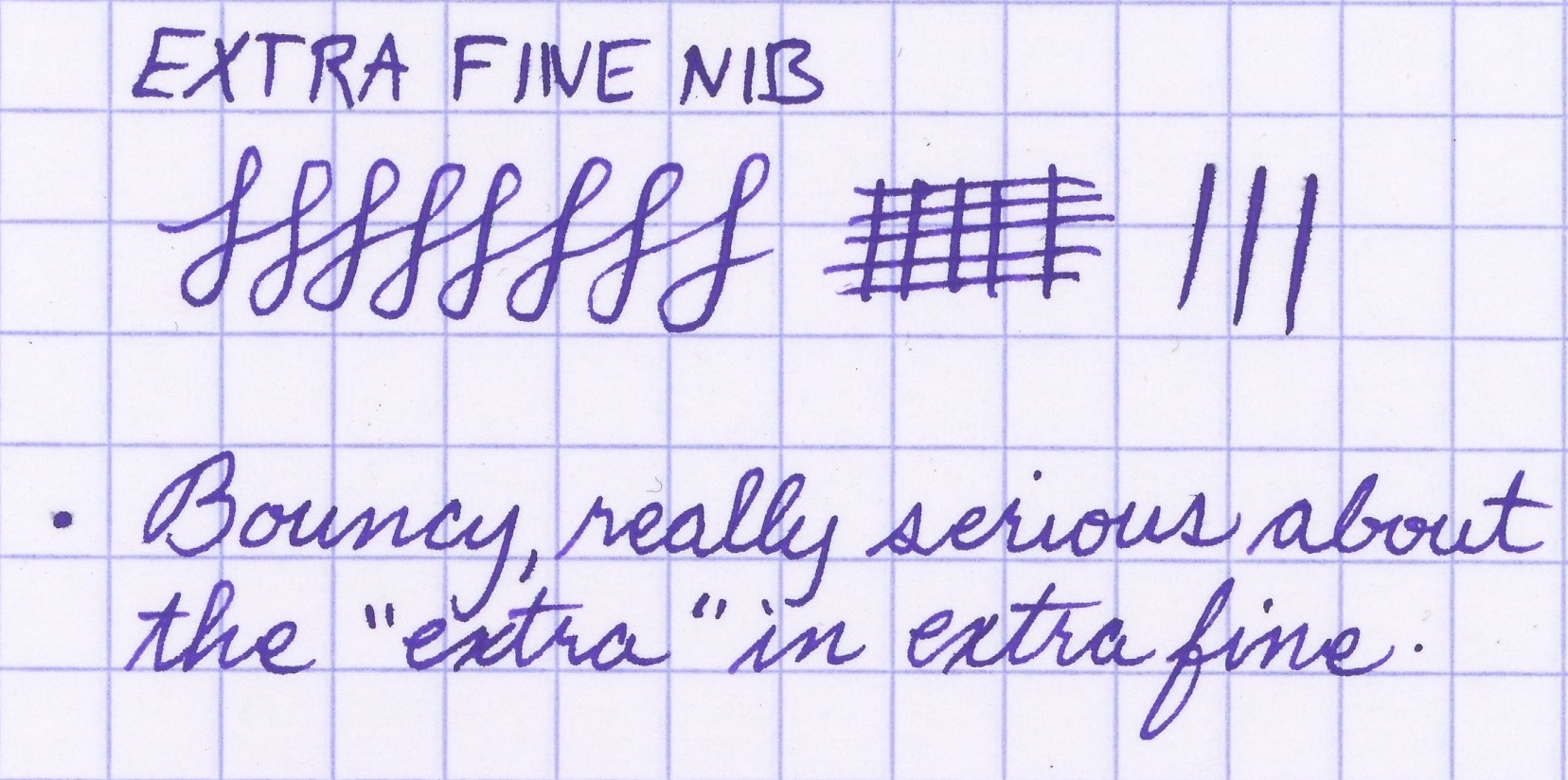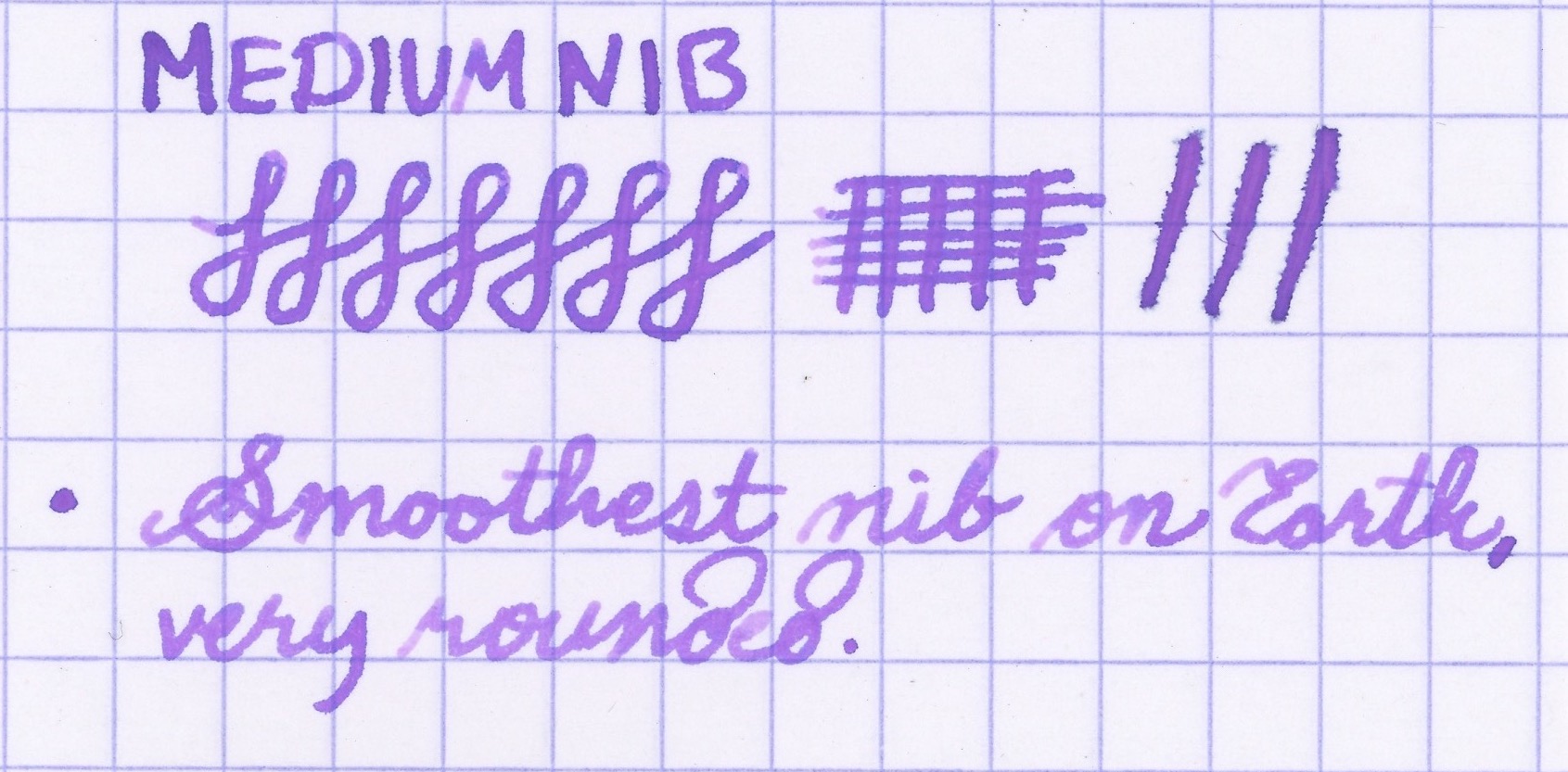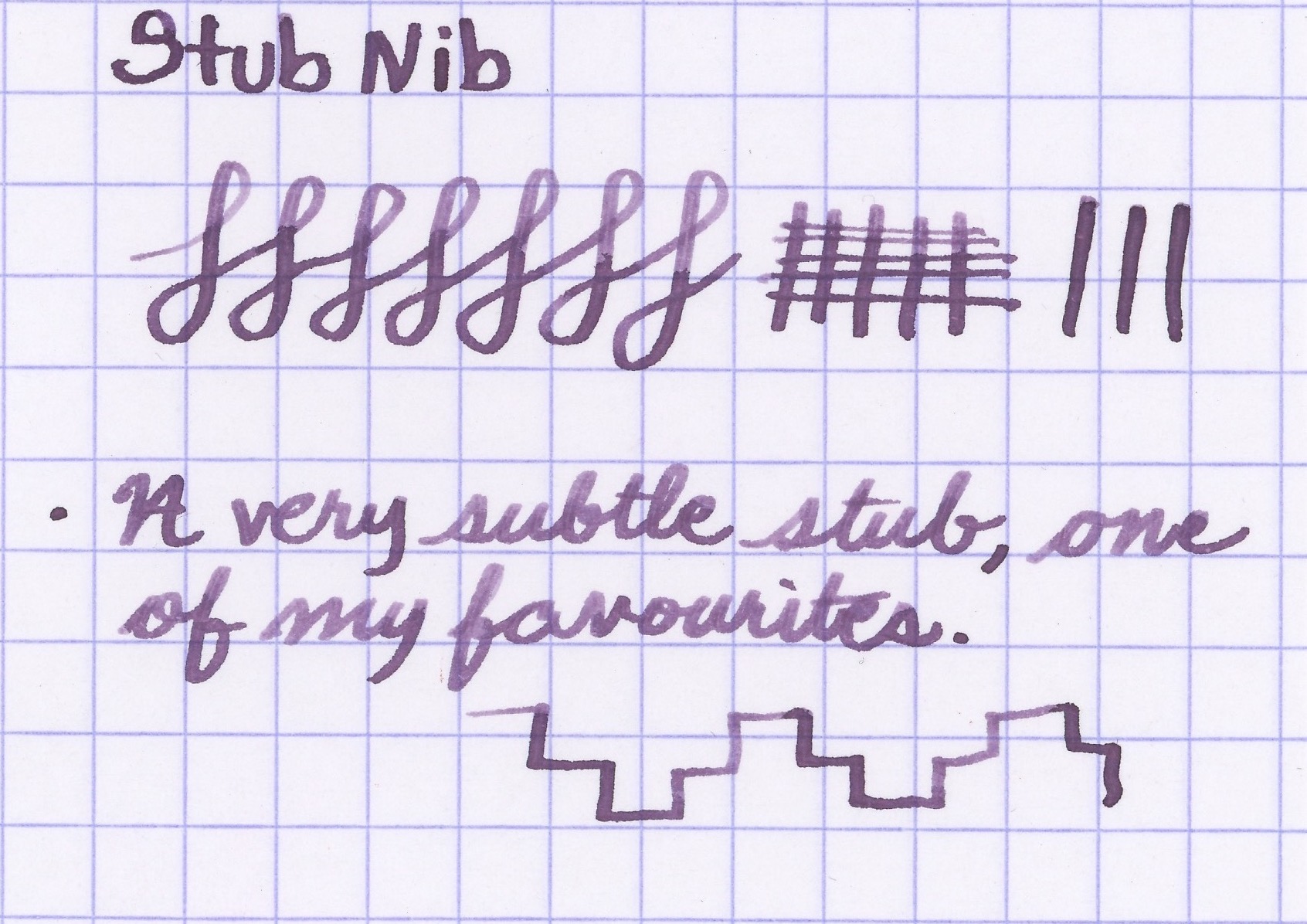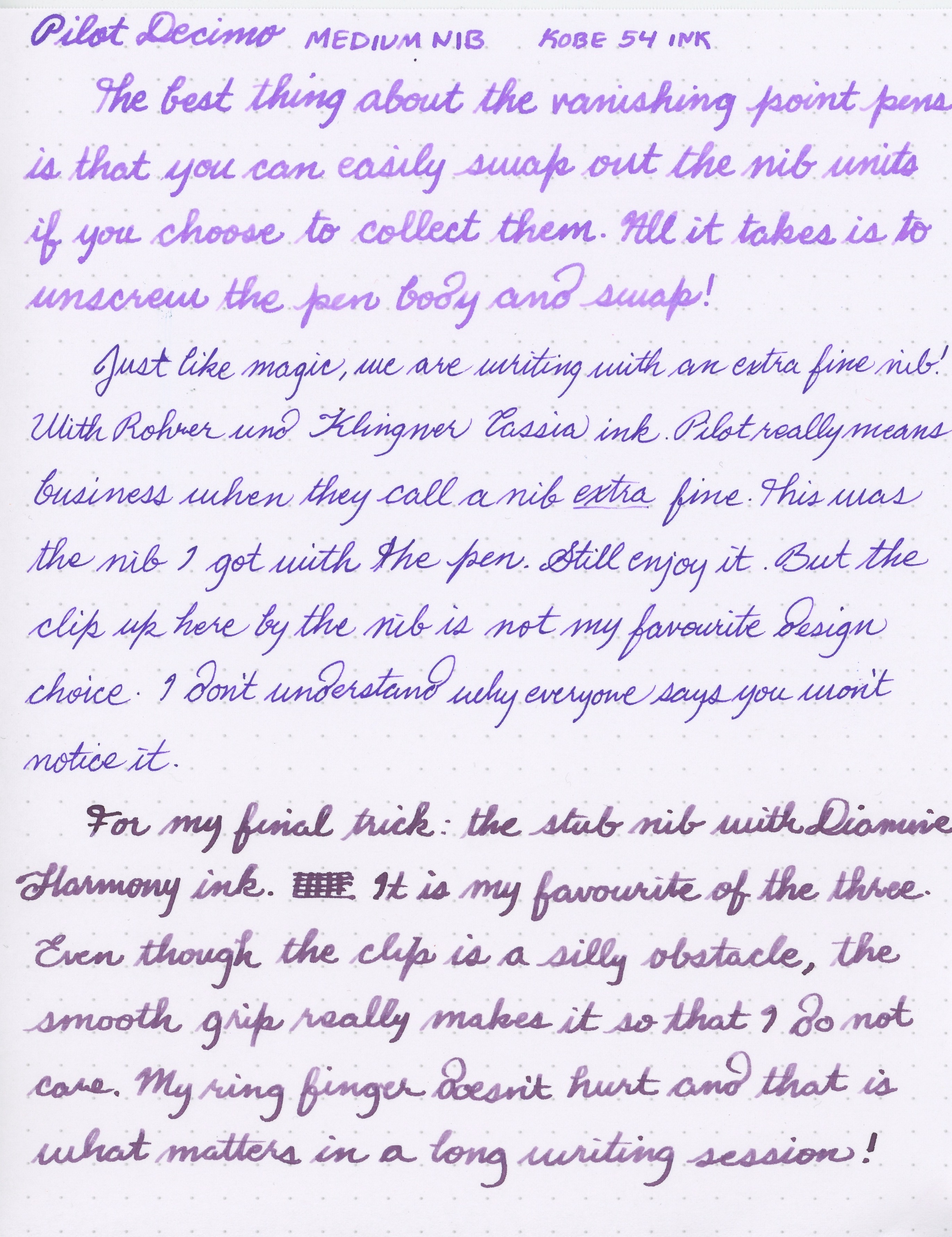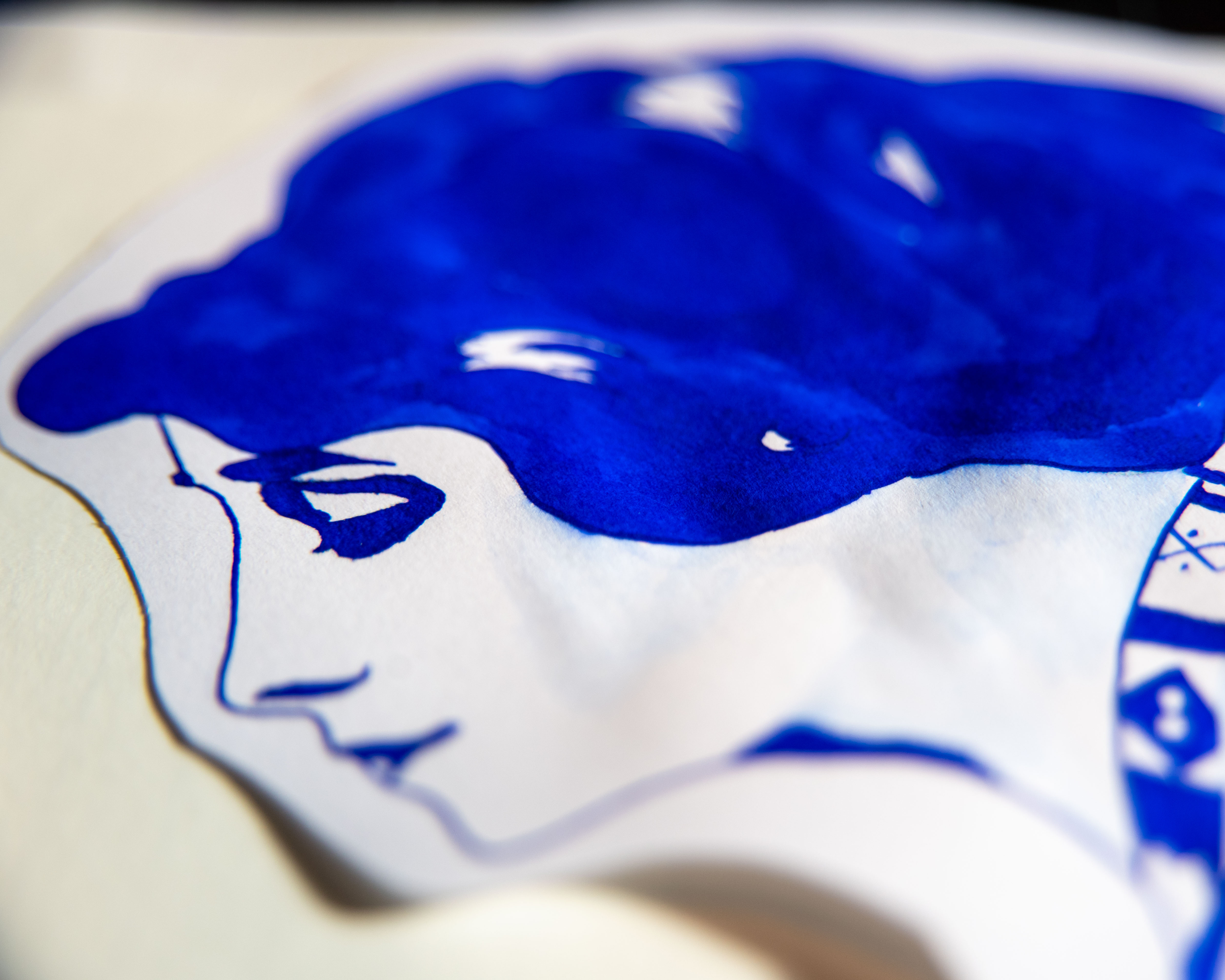Pilot Decimo
This was my first modern gold nib pen. I thought the concept of a clicky fountain pen was fun, and the design was just so interesting and different. Fountain pens really are little works of mechanical art and I very much like to explore that.
Details
The first thing you’d notice about the Decimo, or her bigger sisters the Vanishing Point pens (which use the same nib units, they are simply larger barrels with different colours) is the click mechanism on the back. That makes this pen a really expensive version of a Pilot G2 (I’m just kidding). The click is much longer than that of a disposable pen and has a much more satisfying click to it. For those who fidget with the click mechanism, this is a little bit too involved to do so mindlessly, but it is a great conscious effort.
The clip is the second noticeable thing. It is positioned near the nib instead of near the clicking bit. This is probably practical in that fountain pens are usually stored with the ink pulling away from the nib, but it’s also probably a little bit done in order to be kooky. Other capless fountain pens (like the Curidas from Platinum and the Lamy Dialog) do this same thing. I don’t know of one that doesn’t.
Everyone says that you will not notice the clip and that the clip is no big deal and to not let the clip turn you off of a great pen. Well I think that’s a little romantic of those people, because the clip is very noticeable and it is something that you have to work with in order to use. I usually put two fingers directly over it when I start writing and then adjust as I go. It doesn’t make the pen impossible or to use, but it is different and it’s unfair to say that you won’t even notice. You will notice and it will be weird at first, I promise. Doesn’t mean you’ll hate it. I don’t hate it being there, but I won’t lie and say I love it.
The body is all metal, so it has a good weight to it and does not feel fragile at all. You are also able to easily disassemble the body by unscrewing it.
This pen has nib units which are easy to replace and easy to find. This is my favourite part of the pen for sure. You can have multiple different pens in the same body. I will say that you need to keep around a nice box or case to keep the extra nibs safe. I sew my own little cases.
The grip area is fantastic and perfectly smooth because it isn’t really a grip section at all, but part of the barrel. I do love that there are not threads to run my fingers over.
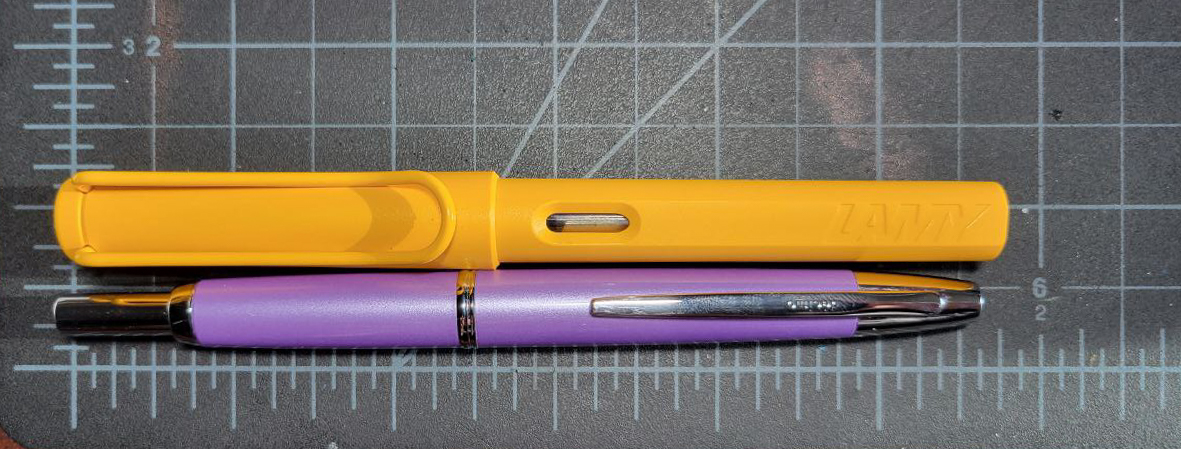
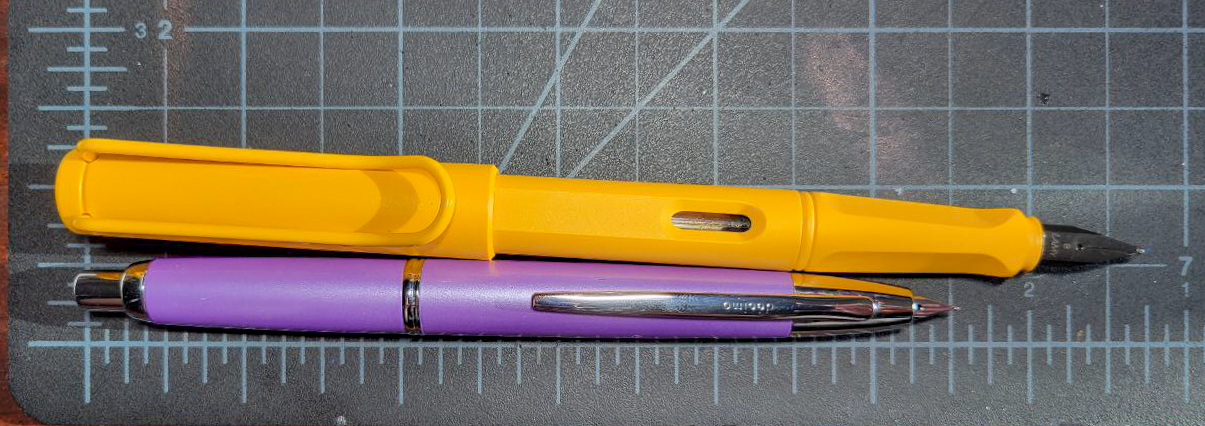
The Decimo is also longer when it’s closed that when it’s engaged.
Writing Sample
I have three nib units for this pen: extra fine, medium, and stub.
Extra Fine:
This one is the most difficult for me to use because of the clip being where it is and how small the nib is. It take much more concentration to use, but it has a very nice very extra fine line.
Medium:
This nib is seriously smooth, no joke about that. It makes me want to try a broad. Of course, just like the extra fine is nearly a needlepoint, the medium could be confused for a fine.
Stub:
This is my favourite of the three because it is a thin stub, which is something I wish I could find in more pens. The Pilot Metropolitan’s stub is one of the best stub nibs around because it isn’t a 1.1, in my opinion. This one is not quite as sharp as the Metropolitan, but it is a lot of fun to use.
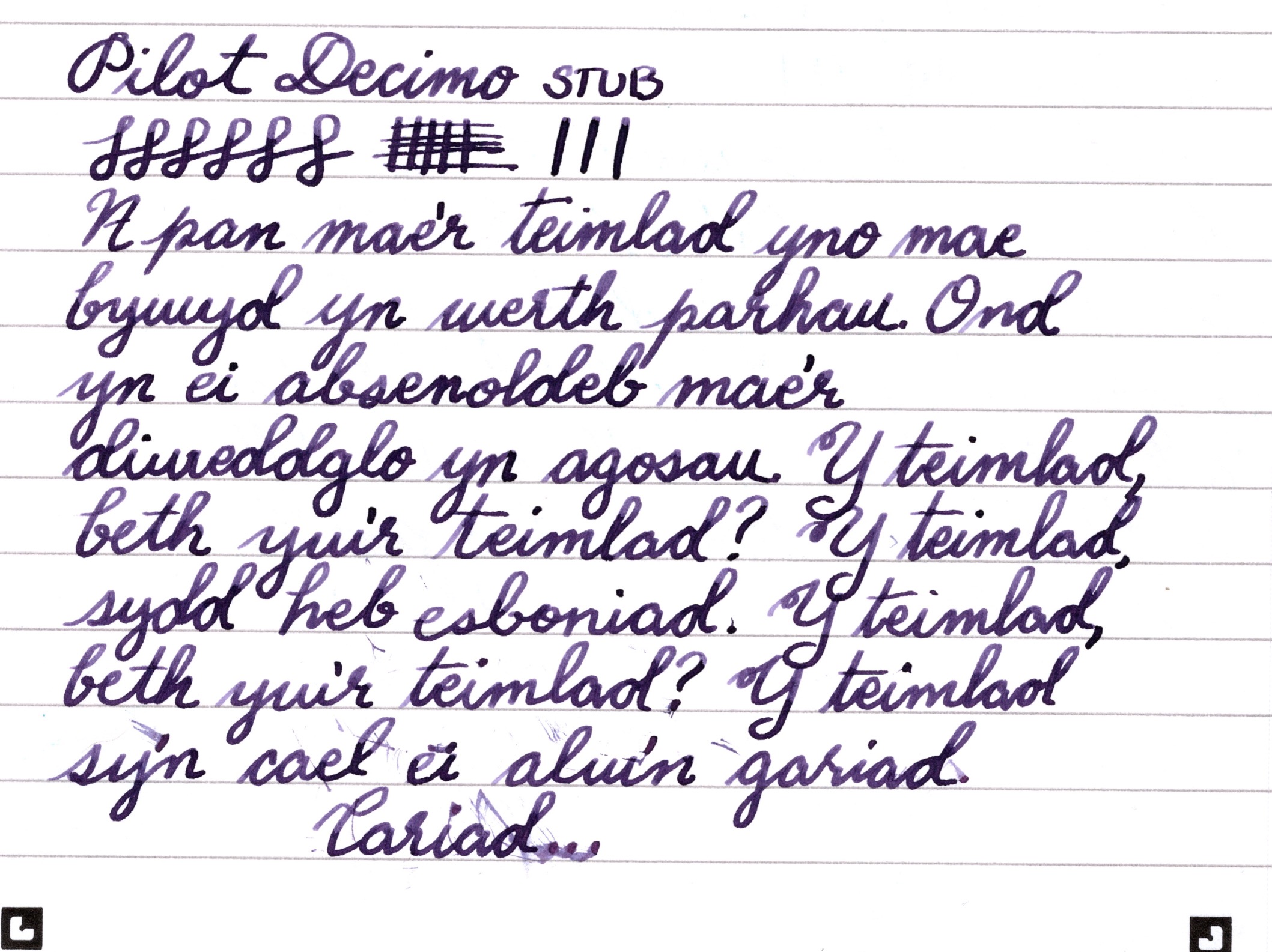

Verdict
I do use this pen in my rotation of inked pens, but I wish I hadn’t started there when I was going in to the “modern gold nib.” I’d rather have started with a Lamy 2000 or a Sailor Shikiori (which was what I did next). I do love the nib units, though, and I would like to try to use one of the Majohn bodies to fit my spares in to so I can just have them all at the ready to use.








